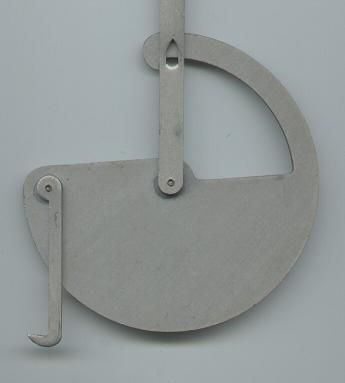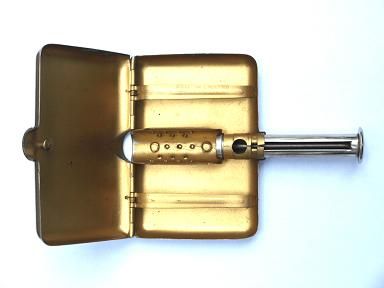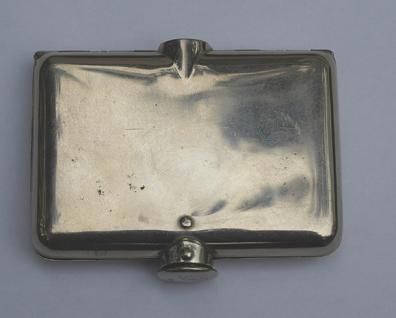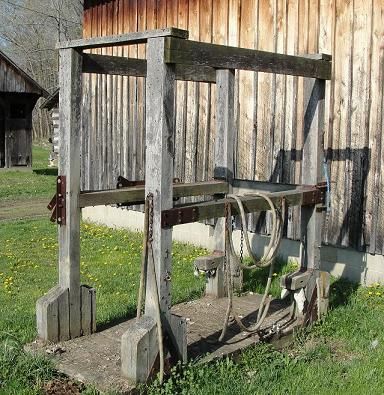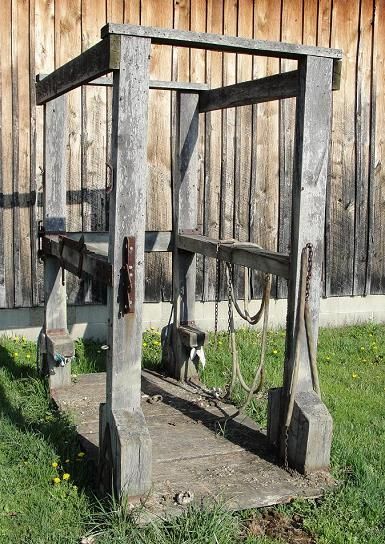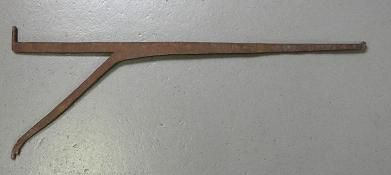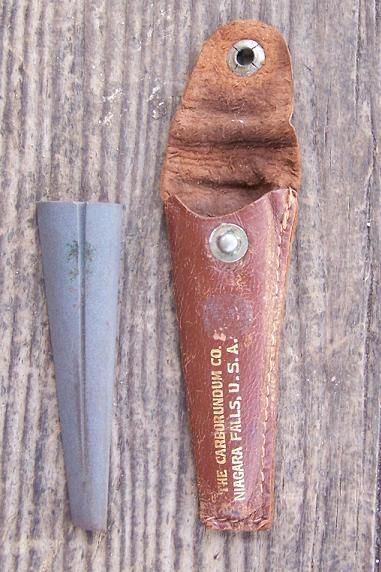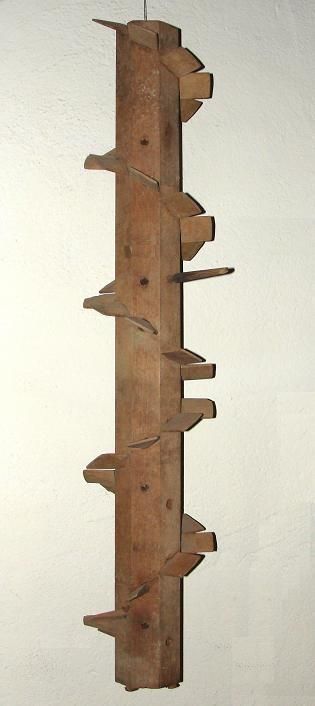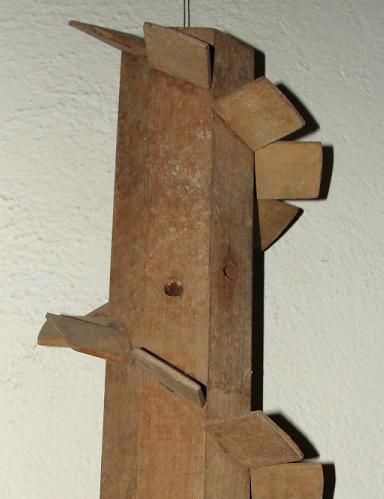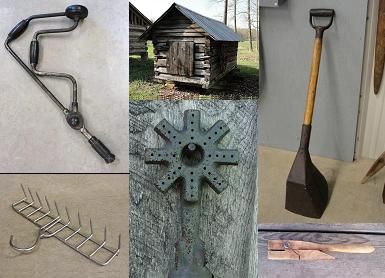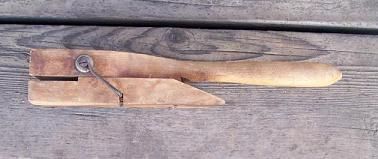1915. 10" tall, the metal pieces can be compressed or expanded as needed:

1916. 14-1/2" long:
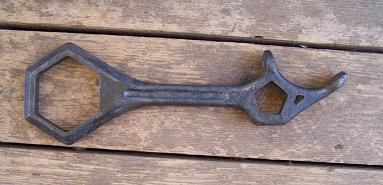
Larger image
1917. 14" long:

Larger image
The holes on top are 3/4" diameter:
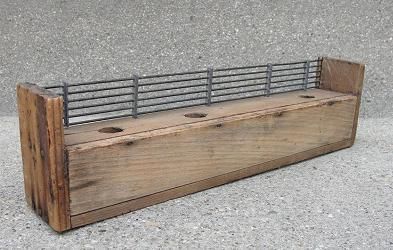
Larger image
The middle hole has a sliding metal door:

Beneath each outer hole is a cone shaped wire screen, it's difficult to see but there is a hole in the bottom of the cone that is about 1/4" diameter:
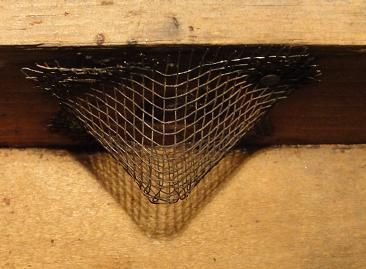
1918. This was sent in by a visitor who is looking to find its purpose, it is spring returned to the position seen here:

Larger image

1919. Approximately 10" long, this was made by Orville Wright, one of the airplane building Wright brothers, it's not related to either bicycles or planes:

Larger image


1920. 11" long, take a look at Neatorama for more guesses on this one and a chance to win a T-shirt:


Answers:
1915. A can soldering tool, it supports the can while it gets soldered, similar to patent number 156,402:

1916. A wrench for use by a fireman, the large hole is for hubs, the five sided hole is for hydrants and the right end is for the older pin lug style hoses.

Larger image
1917. According to a beekeeper, this is a vintage drone trap, which is shown upside down in the pictures. Drones were captured because people used to think an excess drone population ate significantly into the honey crop. The trap was placed at the door of the hive, the drones couldn't get out through the queen excluder material (the metal grate) and would climb up through the wire cones and get trapped in the upper chamber. At evening time, the beekeeper would go out and remove the trap from the hive, open up the metal door in the trap and shake the drones out to sucumb to the cold night. The trap also prevented the old queen from leaving with a swarm, but the young queens could pass through.

Larger image
1918. I like the owner's guess on this device, he thinks it could be a clamp for making shoes, a size 10 mens boot fits well in it from the toe to the arch. The two ends have a ramped up edge that matches the arch of the boot, so they could have been used to hold down the leather until the glue dried.

Larger image

1919. Orville Wright liked his bread sliced at a particular thickness and built this device to be used as a slicing guide:

Larger image


1920. A steak tenderizer and cleaver:


To submit photos, send them to the address in my profile.
Last week's set is seen below, click here to view the entire post.

More discussion and comments on these photos can be found at the newsgroup rec.puzzles.

